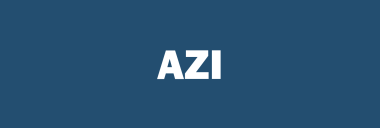USAF, Kratos Release Additional Details of Successful Autonomous Attritable Aircraft Experimentation (AAAx) Flight Series
Rhea-AI Summary
Kratos Defense & Security Solutions (NASDAQ: KTOS) announced successful flight tests of its UTAP-22 Mako unmanned aircraft, marking a historic milestone as the closest a manned fighter has flown to an unmanned aircraft under autonomous control in DOD history. Conducted from April 29 to May 5, 2021, these tests utilized the Skyborg autonomy core system (ACS) to enhance military capabilities. The tests demonstrated the integration of unmanned and manned aircraft, significantly advancing operational effectiveness.
Positive
- Successful flight tests of the UTAP-22 Mako enhance military operational capabilities.
- Demonstration of Skyborg autonomy core system signifies a move from research to practical application.
- Kratos has received a $37.7 million contract for the Skyborg program, indicating strong market demand.
Negative
- None.
News Market Reaction 1 Alert
On the day this news was published, KTOS gained 0.74%, reflecting a mild positive market reaction.
Data tracked by StockTitan Argus on the day of publication.
UTAP-22 Mako Flight Marks Closest Manned Fighter Has Flown to Unmanned Aircraft Under Autonomous Control in DOD History
SAN DIEGO, May 13, 2021 (GLOBE NEWSWIRE) -- Kratos Defense & Security Solutions, Inc. (NASDAQ: KTOS), a leading National Security Solutions provider and industry-leading provider of high-performance unmanned systems, today released additional information on the successful series of flight tests with the Skyborg autonomy core system (ACS) aboard Kratos UTAP-22 Mako tactical unmanned vehicles at Tyndall AFB, Florida. This most recent series of Mako flights occurred from April 29, 2021-May 5, 2021.
A photo accompanying this announcement is available at https://www.globenewswire.com/NewsRoom/AttachmentNg/990ab7e6-e1a5-4d74-a110-8d4bc6a26741
U.S Air Force Test Center Video: (99+) Post | LinkedIn
The 96th Test Wing took part in a series of flight tests using a 19-foot unmanned aircraft launched from Tyndall Air Force Base from April 29 to May 5.
Inside the aircraft, the Autonomy Core System, the “brain” of the autonomous aircraft, made its first three flights for the Autonomous Attritable Aircraft Experiment.
The ACS is part of the AFRL Skyborg Vanguard program. Skyborg’s goal is to develop low cost, unmanned aircraft to provide increased combat capability by teaming those aircraft with traditional manned fighters.
The ACS operates by receiving basic commands from a ground station or airborne fighter and flies the aircraft by deciding on the best flight path and throttle settings to comply with the command.
With this testing, autonomy technology moved from research to reality.
“The execution of this flight test is a great milestone for our closely integrated development and acquisition team. Safely executing this test and providing the knowledge needed to advance the technology is at the heart of what we do. And as always, we’re highly motivated to help bring war-winning technology to the next fight,” said Brig. Gen. Scott Cain, 96th TW commander.
Aircraft controllers on the ground provided commands to the ACS during this test series. In the future, the plan is for direct manned-unmanned teaming via commands sent from a manned F-16 Fighting Falcon to the ACS onboard the unmanned aircraft. These commands could task the ACS “brain” to find and track targets by flying the aircraft to the area of interest and reporting enemy contact locations to the manned fighter.
“This test is a significant step toward teaming manned and unmanned aircraft in combat in the not-too-distant future,” said Maj. Nathan McCaskey, 40th Flight Test Squadron Test Pilot and AAAx Project Pilot. “Unmanned aircraft using the autonomy system developed for this experiment could go places where manned fighters can’t go, providing sensor information back to manned teammates, increasing the power projection capability of the Air Force.”
McCaskey, the lead pilot for the AAAx missions, flew the closest ever manned fighter to an unmanned aircraft under autonomous control in DOD history.
This test demonstrated the building blocks of the autonomous capability. The ACS demonstrated proficiency in basic aviation abilities and responded to commands while navigating in a shared airspace with up to four manned fighter aircraft, including both F-16s and F-15Es from the 40th FLTS.
Planning efforts by Air Force Research Laboratory Strategic Development Planning and Experimentation office, combined with test wing expertise helped make this autonomy test a reality.
“SDPE’s experience with rapid experimentation coupled with 40th expertise in planning and executing complex test resulted in a successful test on an accelerated timeline.” said Lt. Col. Richard Turner, 40th FLTS commander.
Several other organizations also substantially contributed to the success of the test series, including the 46th Test Squadron here and the 82nd Aerial Targets Squadron at Tyndall.
Steve Fendley, President of Kratos Unmanned Systems Division, said, “With the multiple missionization programs/efforts tied to the UTAP-22 Mako over the last several years, we have developed key tactical capability configurations and informed capability configurations and techniques which will also apply to the Valkyrie XQ-58A. We are particularly proud that Kratos Tactical UAS have flown in scenarios with many of the primary U.S. manned fighters/trainers – F-35, F-22, T-38, AV-8B, and now the F-16 as shown in the recent USAF photos – exemplifying the utility and capability of these attritable tactical UAS.”
Eric DeMarco, CEO of Kratos Defense and Security Solutions, said, “Kratos’ opportunity set has never been greater across our Company; our tactical unmanned drones system progress has been accelerating rapidly as our affordable, attritable class of high-performance drones continue to demonstrate their industry-leading position. With our accomplishments and success over the past few months, our confidence in Kratos’ transformative systems and products has never been greater.”
Kratos Unmanned Systems Division is a leading provider of high performance unmanned aerial drone and target systems for threat representative target missions to exercise weapon, radar, and other systems; and tactical aerial drone systems for strike/ISR and force multiplication missions. In December 2020, Kratos received a
Kratos announced its UTAP-22 Mako completed the first Skyborg flight on Wednesday, May 5, 2021.
About Kratos Defense & Security Solutions
Kratos Defense & Security Solutions, Inc. (NASDAQ:KTOS) develops and fields transformative, affordable technology, platforms and systems for United States National Security related customers, allies and commercial enterprises. Kratos is changing the way breakthrough technology for these industries are rapidly brought to market through proven commercial and venture capital backed approaches, including proactive research and streamlined development processes. At Kratos, affordability is a technology, and we specialize in unmanned systems, satellite communications, cyber security/warfare, microwave electronics, missile defense, hypersonic systems, training, combat systems and next generation turbo jet and turbo fan engine development. For more information, please visit www.KratosDefense.com.
Notice Regarding Forward-Looking Statements
Certain statements in this press release may constitute "forward-looking statements" within the meaning of the Private Securities Litigation Reform Act of 1995. These forward-looking statements are made on the basis of the current beliefs, expectations and assumptions of the management of Kratos and are subject to significant risks and uncertainty. Investors are cautioned not to place undue reliance on any such forward-looking statements. All such forward-looking statements speak only as of the date they are made, and Kratos undertakes no obligation to update or revise these statements, whether as a result of new information, future events or otherwise. Although Kratos believes that the expectations reflected in these forward-looking statements are reasonable, these statements involve many risks and uncertainties that may cause actual results to differ materially from what may be expressed or implied in these forward-looking statements. For a further discussion of risks and uncertainties that could cause actual results to differ from those expressed in these forward-looking statements, as well as risks relating to the business of Kratos in general, see the risk disclosures in the Annual Report on Form 10-K of Kratos for the year ended December 27, 2020, and in subsequent reports on Forms 10-Q and 8-K and other filings made with the SEC by Kratos.
Press Contact:
Yolanda White
858-812-7302 Direct
Investor Information:
877-934-4687
investor@kratosdefense.com







